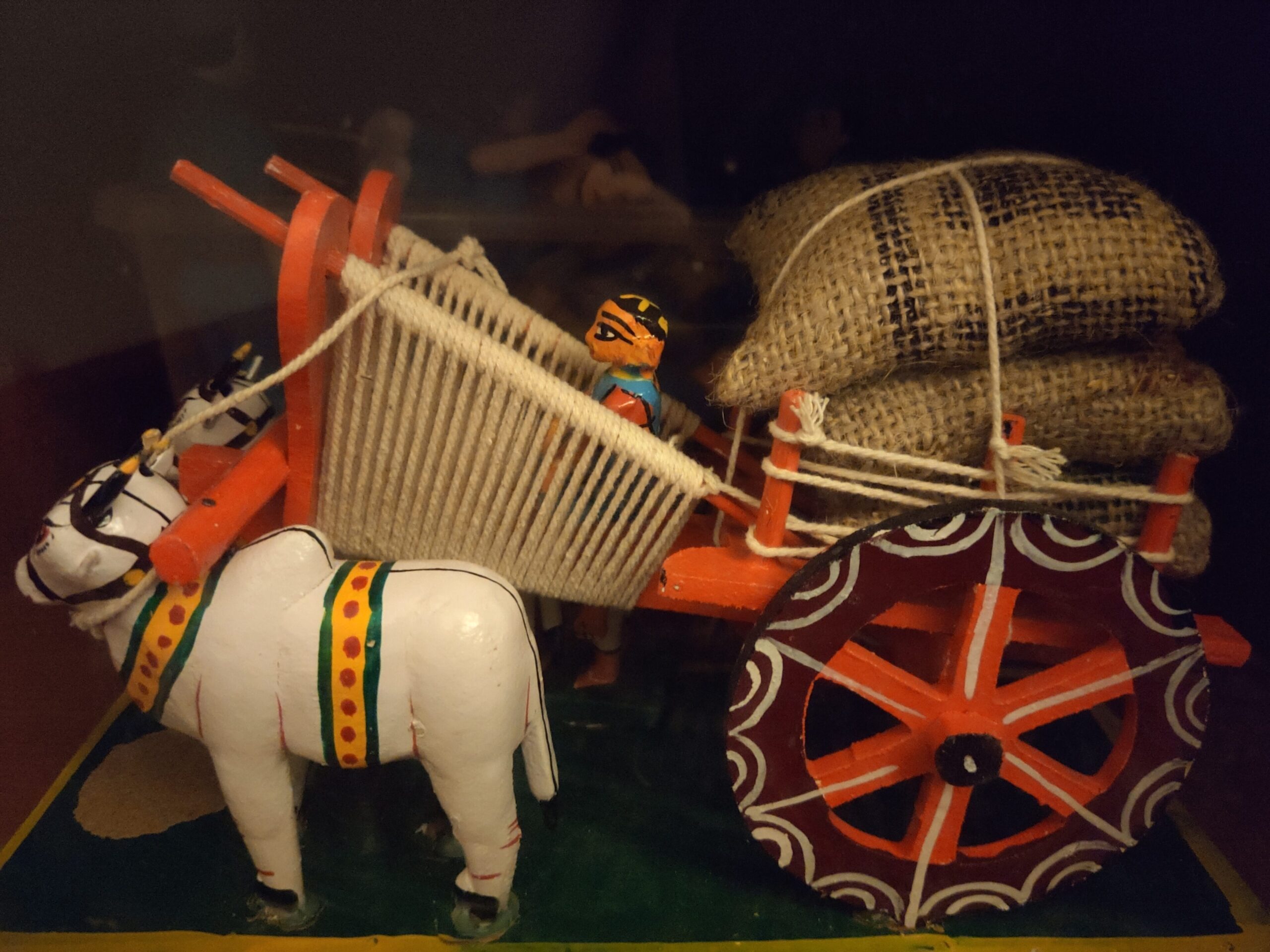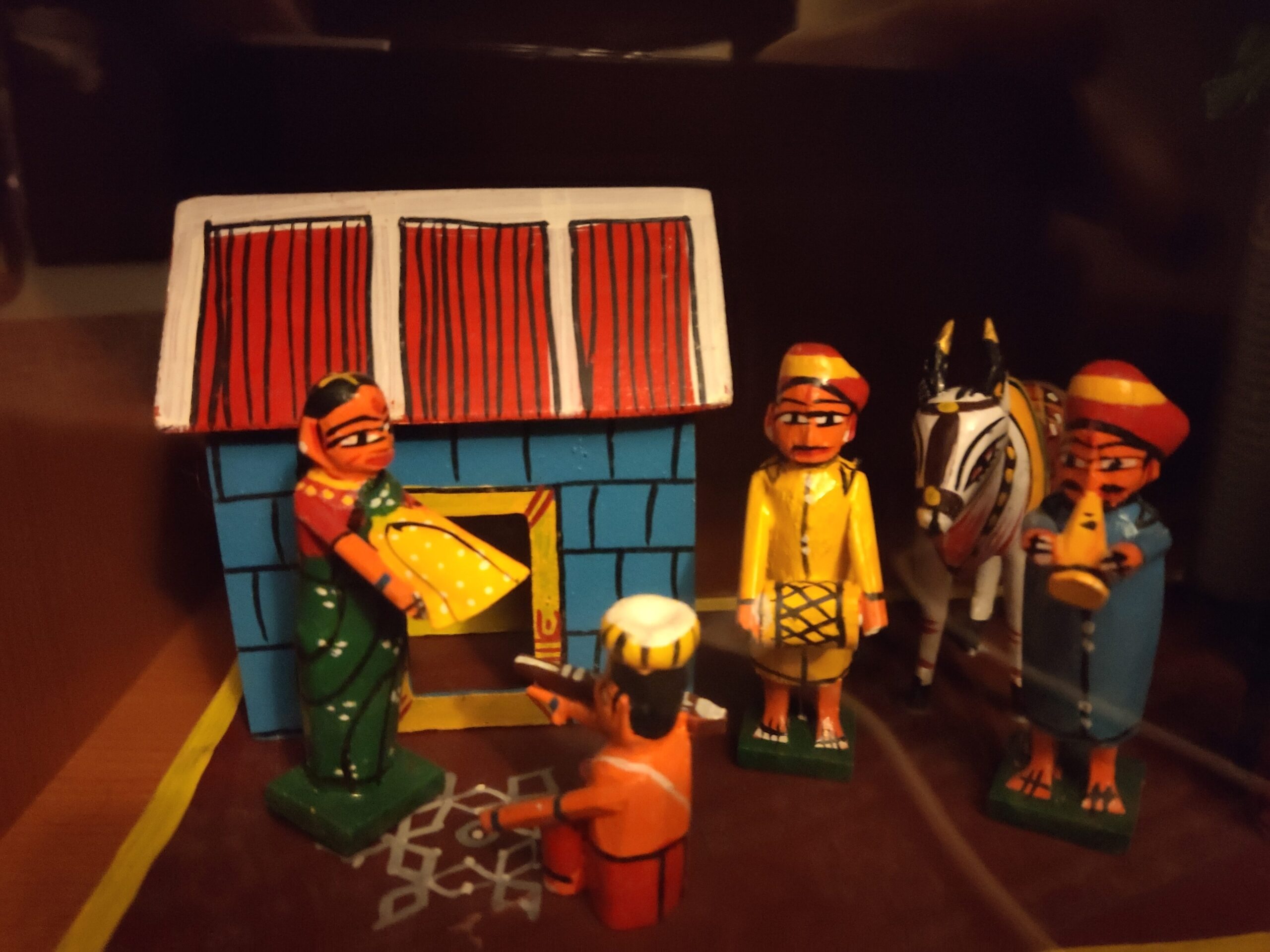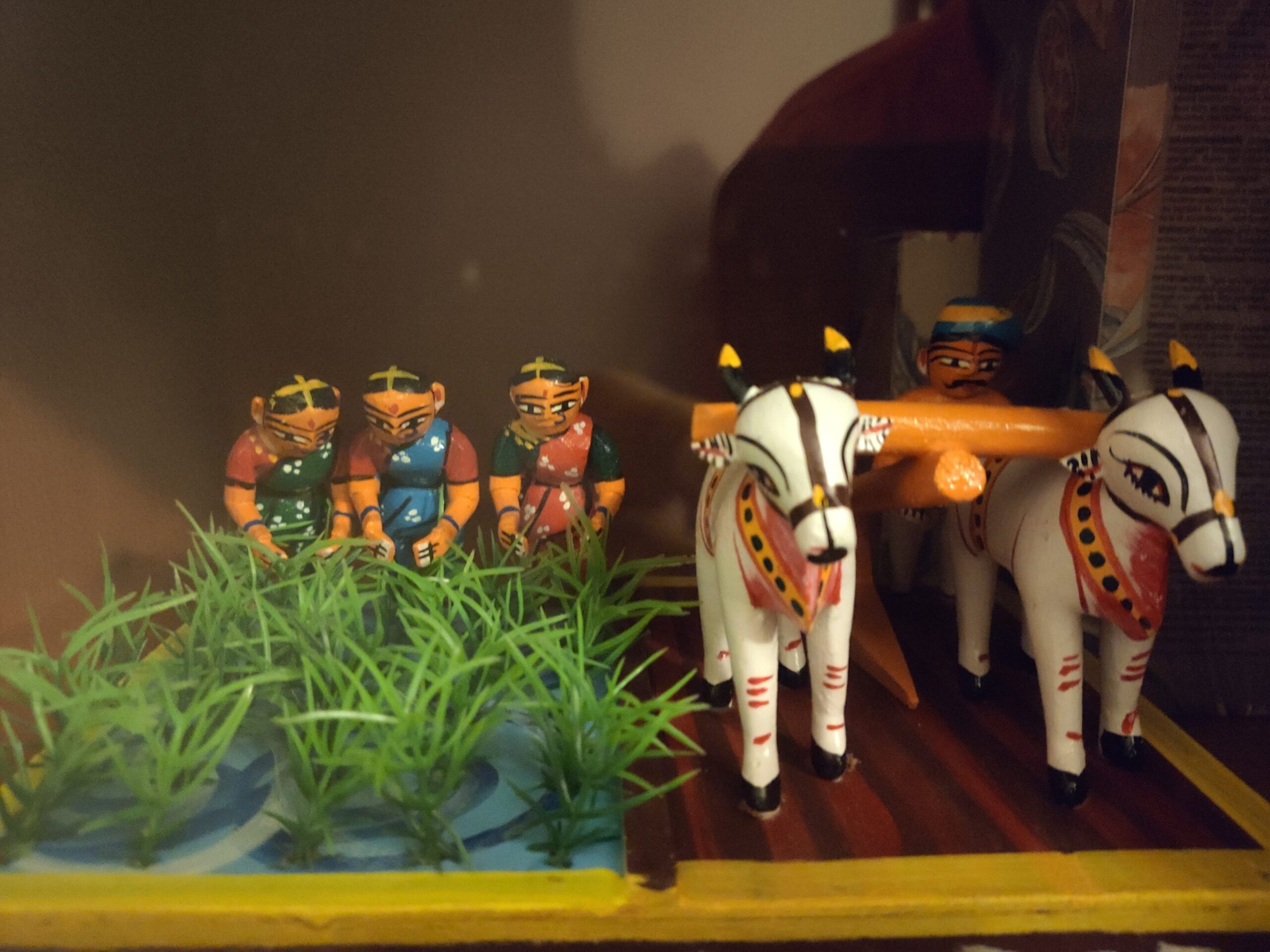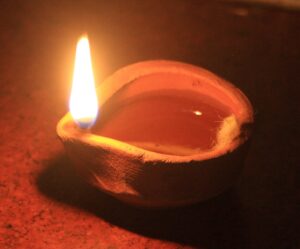
Makar Sankranti or Uttarayan or Maghi or simply Sankranti, is a festival day in the Hindu calendar, dedicated to the deity Surya (sun). It is observed each year the day Sun enters the Capricorn zodiac which corresponds with the month of January as per the Gregorian calendar and is a day the people of India and Nepal celebrate their harvest.It marks the first day of the sun’s transit into Makara rashi (Capricorn), marking the end of the month with the winter solstice and the start of longer days



MAKAR SANKRANTI
WHAT IS MAKAR SANKRANTI ?
IS MAKAR SANKRANTI A RELIGIOUS & CULTURAL FESTIVAL ?
IS IT A HARVEST/ AGRICULTURAL FESTIVAL ?
IS SANKRANTI A SEASONAL FESTIVAL ?
- Sankranti is a Religious & Cultural, Festival of Harvest, welcome longer days, sun worship
- It is observed each year the day Sun enters the Capricorn zodiac which corresponds with the month of January as per the Gregorian calendar
- It is a day the people of India and Nepal celebrate their harvest
- It marks the first day of the sun’s transit into Makara rashi (Capricorn), marking the end of the month with the winter solstice and the start of longer days
WHAT IS THE MAIN DIFFERENCE OF MAKAR SANKRANTI & OTHER INDIAN FESTIVALS ?
SANKRANTI IS THE ONLY INDIAN FESTIVAL CELEBRATED ON A FIXED DAY OF THE GREGORIAN CALENDAR (14 / 15 JANUARY)
- Makar Sankranti is one of the few ancient Indian and Nepali festivals that has been observed according to solar cycles –
- Most other Indian festivals are set by the lunar cycle of the lunisolar (चंद्र – सौर) Hindu calendar
- Being a festival that celebrates the solar cycle, it almost always falls on the same Gregorian date every year (January 14) – except in some years when the date shifts by a day for that year (January 15)
WHY DOES MAKAR SANKRANTI ALMOST ALWAYS FALLS ON JANUARY 14 / 15 OF GREGORIAN CALENDAR UNLIKE OTHER INDIAN FESTIVALS THAT VARY WIDELY IN DATES EVERY YEAR ?
- Makara Sankranti is set by the solar cycle of the Hindu lunisolar calendar, and is observed on a day which usually falls on 14 January of the Gregorian calendar, but sometimes on 15 January
- The movement of the sun from one zodiac sign into another is called Sankranti and as the Sun moves into the Capricorn zodiacal sign known as Makara, this occasion is named as Makara Sankranti
- Sankranti signifies the arrival of longer days
- Makara Sankranti falls in the Hindu calendar solar month of Makara, and the lunar month of Magha (the festival is also called Magha Sankranti or Magha festival in parts of India)
- Sankranti marks the end of the month with winter solstice for India and Nepal and the longest night of the year, a month that is called Pausha in the lunar calendar and Dhanu in the solar calendar in the Vikrami system
- The festival celebrates the first month with consistently longer days
- Sun starts its annual swing northwards
- According to various Indian calendars, the Sun’s movement changes and the days from this day onwards become lengthier and warmer and so the Sun-God is worshiped on this day as a great benefactor
- Sun starts moving into the Northern hemisphere after completing six months in the Southern hemisphere
- According to Hindu religious texts, on the day of Uttarayani the sun enters the zodiac sign of Makara (Capricorn), i.e., from this day onwards the sun becomes ‘Uttarayan’ or it starts moving to the north
- It is said that from this day, which signals a change of season, the migratory birds start returning to the hills
ASTRONOMICALLY – HOW IS THE DATE OF SANKRANTI CALCULATED ?
WHY DOES MAKAR SANKRANTI ALMOST ALWAYS FALLS ON JANUARY 14 / 15 OF GREGORIAN CALENDAR UNLIKE OTHER INDIAN FESTIVALS THAT VARY WIDELY IN DATES EVERY YEAR ?
There are two different systems to calculate the Makara Sankranti date :
- nirayana (without adjusting for precession of equinoxes, tropical) –
- The January 14 date is based on the nirayana system
- sayana (with adjustment, sidereal)
- While the sayana system typically computes to about December 23, per most Siddhanta texts for Hindu calendars
- As per the solar calendar, after one year, the Sun comes to the same location 20 minutes late every year, which means the Sun needs 1 day extra after every 72 years in the sky
- Because Gregorian calendar does not accommodate this difference Makar Sankranti sometimes shifts from 14 January to 15 January, and so on
- Scientifically, currently in the Northern Hemisphere, winter solstice occurs between 21 and 22 December
- Day light will begin to increase on 22 December and on this day, the Sun will begin its northward journey which marks Uttarayaan
- The date of winter solstice changes gradually due to the Axial precession of the Earth, coming earlier by approximately 1 day in every 70 years
- Hence, if the Maghe Sankranti at some point of time did mark the day after the actual date of winter solstice, a date in mid-January would correspond to around 300 CE
WHAT IS THE SIGNIFICANCE DATE OF SANKRANTI ?
- Every year Makar Sankranti is celebrated in the month of January to mark the winter solstice
- This festival is dedicated to the Hindu religious sun god Surya
- This significance of Surya is traceable to the Vedic texts, particularly the Gayatri Mantra, a sacred hymn of Hinduism found in its scripture named the Rigveda
- Makara Sankranti is regarded as important for spiritual practices and accordingly, people take a holy dip in rivers, especially Ganga, Yamuna, Godavari, Krishna and Kaveri
- The bathing is believed to result in merit or absolution of past sins
- They also pray to the sun and thank for their successes and prosperity
- A shared cultural practices found amongst Hindus of Nepal and various parts of India is making sticky, bound sweets particularly from sesame (til) and a sugar base such as jaggery (gud, gur, also Chaku in Nepali language)
- This type of sweet is a symbolism for being together in peace and joyfulness, despite the uniqueness and differences between individuals
- For most parts of India – this period is a part of early stages of the Rabi crop and agricultural cycle, where crops have been sown and the hard work in the fields is mostly over
- The time thus signifies a period of socializing and families enjoying each other’s company, taking care of the cattle, and celebrating around bonfires, in Maharashtra the festival is celebrated by flying kites
WHAT ARE THE NOMENCLATURE & REGIONAL NAMES OF MAKAR SANKRANTI ?
- Makara Sankranti is an important pan-Indian solar festival, known by different names though observed on the same date, sometimes for multiple dates around the Makar Sankranti
- It is known as Pedda Panduga in Andhra Pradesh and Telangana, Makara Sankranti in Karnataka and Maharashtra, Pongal in Tamil Nadu, Magh Bihu in Assam, Magha Mela in parts of central and north India, as Makar Sankranti in the west, Maghara Valaku in Kerala, and by other names. In some parts of India it is believed that a demon was killed in that day
- Uttarayan
- Sankranti
- Magha
- Môkôr Sôngkrānti
- Mela
- Maghi
- Ghughuti
- Bhogi
- Magha Sankranti in Nepal
- Magh Bihu in Assam’
- Maghi (preceded by Lohri) in Punjab, Haryana and Himachal Pradesh (popular amongst both the Hindus and Sikhs)
- Sukarat in central India
- Thai Pongal in Tamil Nadu, Uttarayan in Gujarat, Uttarakhand and Uttar Pradesh
- Ghughuti in Uttarakhand
- Makara Sankranti in Odisha, Karnataka, Maharashtra, Goa, West Bengal (also called Poush Sankranti)
- Uttarakhand and Uttar Pradesh (also called Khichidi Sankranti) or as
- Sankranthi in Andhra Pradesh and Telangana
WHAT ARE THE NOMENCLATURE & REGIONAL NAMES OF MAKAR SANKRANTI ?
- Makara or Makar Sankranti is celebrated in many parts of the Indian subcontinent with some regional variations. It is known by different names and celebrated with different customs in different Indian states and South Asian countries :
- Suggi Habba, Makara Sankramana, Makara Sankranti : Karnataka
- Sankranti , Makara Sankranti,Makara Sankramana,Uttarayana or Sankranti : Andhra Pradesh, Telangana, Madhya Pradesh
- Makara Sankranti or Makara Mela and Makara Chaula : Odisha
- Makara Sankranti or Makaravilakku and Makara Jyothi : Kerala
- Makara Sankranti or Til Sankrant : Bihar
- Makar Sankranti, Maghi Sankrant, Haldi Kumkum or Sankranti : Maharashtra, Goa, Nepal
- Hangrai : Tripura
- Thai Pongal or Uzhavar Thirunal: Tamil Nadu, Sri Lanka, Singapore, Malaysia
- Uttarayan: Gujarat
- Maghi: Haryana, Himachal Pradesh and Punjab
- Magh Bihu or Bhogali Bihu: Assam
- Shishur Saenkraat: Kashmir Valley
- Sakraat or Khichdi: Uttar Pradesh and western Bihar
- Poush Sangkranti: West Bengal, Bangladesh
- Tila Sakrait: Mithila
- Tirmoori: Pakistan
WHAT ARE THE VARIOUS FESTIVITIES ASSOCIATED WITH MAKAR SANKRANTI ?
- Kite flying, bonfires, fairs, surya puja in river, feast, arts, dance, socialization, Cow Pooja
- Makar Sankranti is observed with social festivities such as colorful decorations, rural children going house to house, singing and asking for treats in some areas, melas (fairs), dances, kite flying, bonfires and feasts
- Many go to sacred rivers or lakes and bathe in a ceremony of thanks to the sun
- Every twelve years (marking one complete revolution of Jupiter around the Sun) the Hindu’s observe Makar Sankranti with one of the world’s largest mass pilgrimages, with an estimated to 100 million people attending the event
- At this event, then they say a prayer to the sun and bathe at the Prayaga confluence of the River Ganga and River Yamuna at the Kumbha Mela – a tradition attributed to Adi Shankaracharya
IS SANKRANTI A SINGLE DAY FESTIVAL ?
In most regions of India, Sankranti festivities last for two to four days of which each day is celebrated with distinct names and rituals
- Day 1 – Maghi (preceded by Lohri), Bhogi Panduga
- Day 2 – Makar Sankranti, Pongal, Pedda Panduga, Uttarayana, Magh Bihu
- Day 3 – Mattu Pongal, Kanuma Panduga
- Day 4 – Kaanum Pongal, Mukkanuma
HOW IS SANKRANTI CELEBRATED IN TELUGU STATES OF ANDHRA PRADESH & TELANGANA
The festival Sankranti (సంక్రాంతి) is celebrated for four days in Andhra Pradesh and Telangana
- DAY 1 – BHOGI (భోగి)
- DAY 2 – SANKRANTI (సంక్రాంతి) – THE MAIN FESTIVAL DAY
- DAY 3 – KANUMA (కనుమా)
- DAY 4 – MUKKANUMA (ముక్కనుమా)
DAY 1 : BHOGI (భోగి)
- The day preceding Makara Sankranti is called Bhogi
- This is when people discard old and derelict things and concentrate on new things causing change or transformation
- At dawn, people light a bonfire with logs of wood, other solid fuels and wooden furniture that are no longer useful
DAY 2 : SANKRANTI (సంక్రాంతి)
THE MAIN FESTIVAL DAY
- The second day is Makara Sankranti
- People wear new clothes, pray to God, and make offerings of traditional food to ancestors who have died
- They also make beautiful and ornate drawings and patterns on the ground with chalk or flour, called rangoli or muggu in Telugu, in front of their homes
- Colorful floor artwork (muggulu) decorate entrances and streets during Sankranti
- These drawings are decorated with flowers, colours and small, hand-pressed piles of cow dung, called gobbemma
- For this festival all families prepare chekkalu, chakralu, arisalu, buralu, gavvalu, purnalu, bundi mithai, bundi laddu, garelu, chakinalu, nuvvula appalu, katte appalu or karam appalu, madugulu (jantikalu), bellam appalu, kudumulu, ariselu, appalu (a sweet made of jaggery and rice flour), dappalam (a dish made with pumpkin and other vegetables) and make an offering to God
DAY 3 : KANUMA (కనుమా)
- Kanuma is celebrated on the third day
- Kanuma is very intimate to the hearts of farmers because it is the day for praying and showcasing their cattle with honor
- Cattle are the symbolic indication of prosperity
- On the day after Makara Sankranti, the animal kingdom is remembered and, in particular, cows
- Girls feed the animals, birds and fish as a symbol of sharing
DAY 4 : MUKKANUMA (ముక్కనుమా)
- The fourth day is called Mukkanuma which is popular among the non-vegetarians of the society
- On this day – farmers offer prayers to the elements (like soil, rain, fire for helping the harvest) and the (village) goddesses with their gifts which sometimes (and these days mainly) include animals
- Kanuma, Mukkanuma and the day following Mukkanuma call for celebrations with union of families, friends, relatives
- People play with kites and the sky is filled with beautiful kites.
- Another notable feature of the festival in Andhra Pradesh and Telangana is the Haridasu and Gangiredduvallu who go early in the morning with a colourfully decorated cow
- Haridasus sing songs of Lord Vishnu (Hari); hence the name Haridasu (servant of Hari)
- It is a custom that he should not talk to anyone and only sing songs of Lord Vishnu when he goes to everyone’s house
WHAT ARE SOME OF THE OTHER OBSERVATIONS FOR SANKRANTI ?
- Maharashtra : Women make it a point to wear black clothes
- As Sakranti falls in the winter months of the region, wearing black adds to the body warmth
- This is an essential reason behind wearing black, which is otherwise barred on festival days
- As per another legend, Lord Surya forgave his son Shani and his son visited him on Sankranti
- And that’s why people distribute everyone sweets and urge them to let go of any negative or angry feelings
- Gujarati people keenly await this festival to fly kites, called ‘patang’. Kites for Uttarayan are made of special light-weight paper and bamboo and are mostly rhombus shaped with central spine and a single bow
- The string often contains abrasives to cut down other people’s kites
- Sankranti is celebrated in Kerala at Sabarimala where the Makara Jyothi is visible followed by the Makaravilakku celebrations
- Punjab – Culturally, people dance their famous “bhangra”
- Kite flying is traditionally observed as a part of this festival
- On this occasion the sky in Jaipur and Hadoti regions is filled with kites, and youngsters engage in contests trying to cut each other’s strings
- New boiled rice is offered to the Sun god during sunrise, as a prayer which symbolises thanks to the sun for providing prosperity
- Tamil Nadu – In some places, Jallikattu or taming the wild bull contest, is the main event of this day and this is mostly seen in the villages
- Thank relatives and friends for their support in the harvest
- Iinvolves ritual bathing-the religious ritual of the Uttarayani mela consists of bathing before daybreak
- Practice of offering sweetmeats to crows and other birds during Makar Sankranti – offerings to the crows are made to pay homage to the departed souls of their ancestors

